Bid Confidently, Bid Successfully – Try Our Flooring Cost Estimates!
- Accurancy
- Efficiency
- Transparency
- Customization
- Time Saving
- Professionalism
- Cost Control

Flooring replacement costs for hospital and healthcare facilities can be categorized into low, mid, and high ranges. In the low range, costs typically fall between $6 to $9.60 or more per square foot, reflecting basic materials and standard installation. Mid-range estimates range from $9.60 to $14.40 or more per square foot, accounting for higher-quality materials, specialized requirements for healthcare settings, and potentially more complex installation processes. In the high range, costs escalate to $14.40 per square foot and above, often indicating premium materials, intricate installation procedures, and additional services such as extensive subfloor preparation or removal of existing flooring.
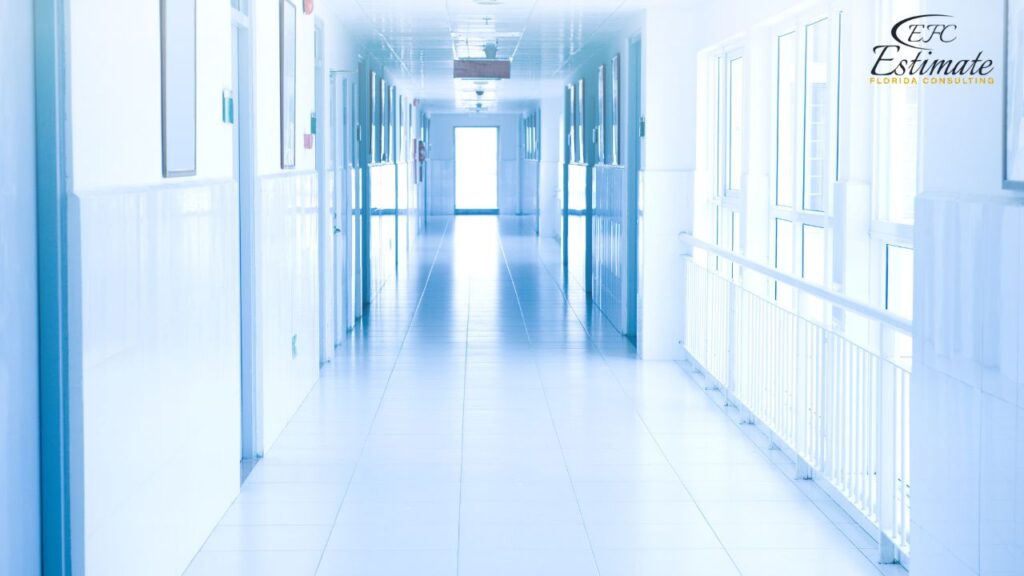
This detailed article provides an in-depth analysis of the key considerations, cost estimation methodologies, popular flooring options, and cost management strategies specific to hospital and healthcare facility environments.

Fully Insured License Hire Contractor For Flooring Installation
Hire Contractor
Make Informed Design Decisions Showcase Your Design Ideas
Get RenderingConducting a thorough initial assessment is critical to accurately estimating the cost of flooring replacement in hospital and healthcare facilities. This assessment involves not only evaluating the current state of the flooring but also considering the unique requirements and compliance standards of healthcare environments. Special attention must be given to infection control properties, slip resistance, and durability. The cost of this assessment typically ranges from $500 to $2,000, depending on the size and complexity of the facility.
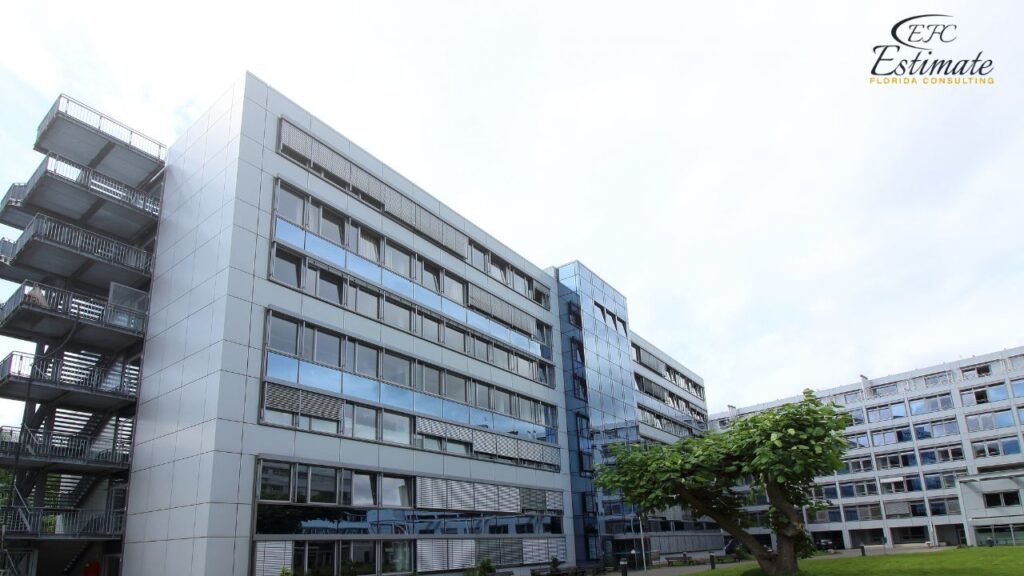
Choosing the right flooring materials is crucial for healthcare facilities, where hygiene and safety are paramount. Options such as vinyl composition tile (VCT), luxury vinyl plank (LVP), rubber flooring, and epoxy flooring are popular choices due to their durability and ease of maintenance.
Flooring Material | Cost per Square Foot |
Vinyl Composition Tile | $4 – $8 |
Luxury Vinyl Plank | $5 – $10 |
Rubber Flooring | $5.50 – $14.00 |
Epoxy Flooring | $7.80 – $15.70 |
Note: These are General Costs and actual cost can be different by location, project size, complexity of projects.
Obtaining accurate labor and installation estimates is essential to developing a realistic budget for flooring replacement. Qualified flooring contractors or installation teams should be solicited for bids, considering factors such as the complexity of the project, specialized skills required, and adherence to infection control protocols. Labor costs typically range from $2 to $7 per square foot or more, depending on the type of flooring and the intricacy of the installation process.
In addition to material and labor costs, there are several additional expenses to consider when replacing flooring in healthcare facilities. These may include furniture moving and storage, disposal of old flooring materials, and temporary relocation of patients and staff. Budgeting for these expenses is crucial and can range from $500 to $2,000 for furniture moving and storage, and $1 to $3+ per square foot for disposal of old flooring materials. It’s also wise to allocate a contingency fund of 10% to 20% of the total project cost to cover unforeseen expenses or changes in project scope.

Once all cost estimates have been obtained, they should be compiled into a comprehensive budget document. This document should include line-item breakdowns for materials, labor, compliance measures, additional expenses, and contingency funds. It’s essential to review the budget with key stakeholders, such as hospital administrators, facility managers, and finance departments, to ensure alignment with organizational goals and budgetary constraints.
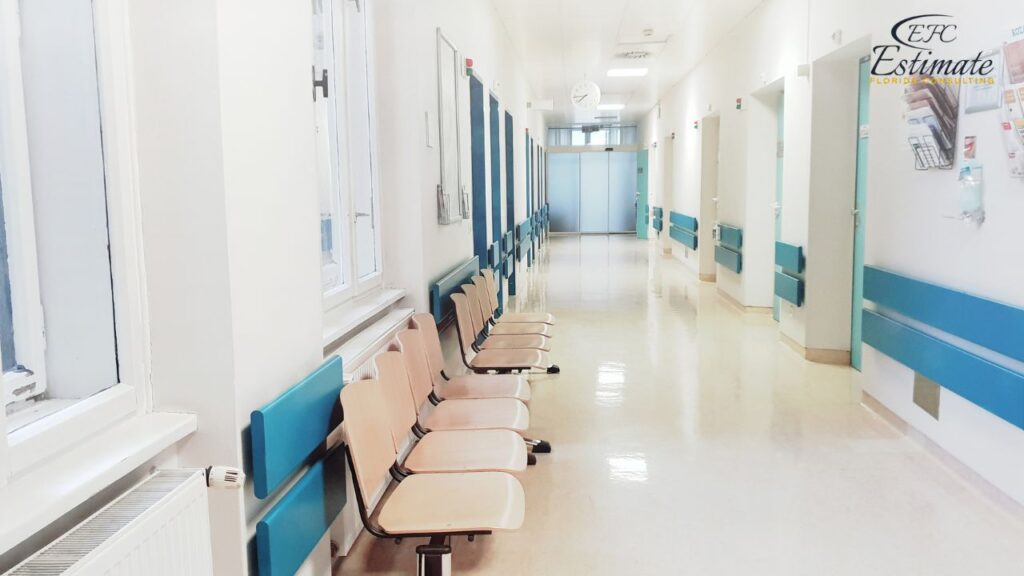
Receive highly accurate estimates tailored to your zip code, giving you the edge to secure more projects. Upload your plans and start winning!
Effectively managing costs during flooring replacement projects in hospital and healthcare facilities requires a combination of strategic planning, proactive risk mitigation, and efficient resource allocation. Here are some key strategies to consider:
Investing in flooring materials and installation practices that prioritize infection control and patient safety is paramount, even if it entails a higher upfront cost. By selecting antimicrobial flooring materials and implementing stringent infection control protocols during installation, such as dust containment measures and HEPA filtration, healthcare facilities can minimize the risk of healthcare-associated infections (HAIs) and promote a safer environment for patients, staff, and visitors.
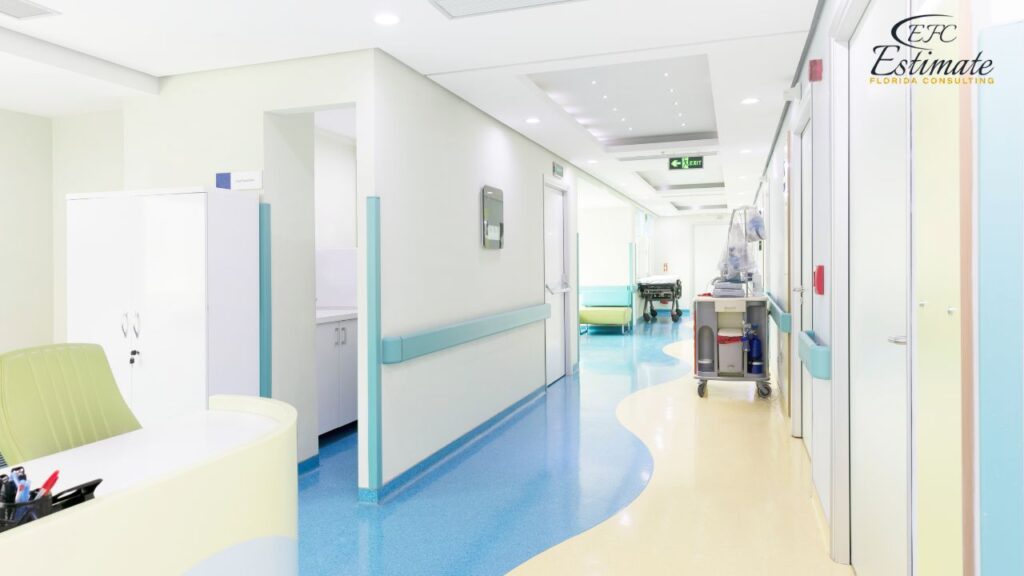
Prioritizing infection control measures demonstrates a commitment to patient safety and helps safeguard the reputation and credibility of the healthcare institution.
To minimize disruption to hospital operations during flooring replacement projects, scheduling work during off-peak hours, weekends, or holidays is essential. Additionally, implementing phased construction schedules allows for continuous patient care and maintains access to critical areas such as operating rooms, emergency departments, and patient wards. By prioritizing operational efficiency, healthcare facilities can ensure uninterrupted service delivery while completing necessary maintenance and renovation projects, ultimately enhancing patient satisfaction and staff productivity.
Healthcare facilities can optimize procurement processes and secure competitive pricing on materials, labor, and equipment by leveraging group purchasing agreements or cooperative contracts. Collaborating with other healthcare facilities or group purchasing organizations (GPOs) enables facilities to negotiate bulk discounts, streamline procurement procedures, and access a broader range of suppliers. By capitalizing on group purchasing agreements, healthcare institutions can achieve cost savings, improve supply chain efficiency, and enhance overall financial performance.
Prioritizing preventive maintenance strategies for flooring materials helps extend their lifespan and minimize long-term repair and replacement costs. Implementing regular cleaning, inspection, and maintenance programs allows healthcare facilities to address issues such as wear and tear, staining, and moisture damage proactively. By investing in preventive maintenance, healthcare institutions can preserve the integrity and functionality of their flooring assets, ensuring a safe and hygienic environment for patients and staff while optimizing operational efficiency and cost-effectiveness.
Maintaining detailed records of project expenses is essential for tracking costs and identifying areas for improvement. By documenting invoices, receipts, change orders, and contractor agreements, healthcare facilities can monitor budget variances, analyze spending trends, and make informed decisions to keep projects on track financially. Utilizing project management software or financial tracking tools enhances transparency, accountability, and financial oversight, enabling healthcare institutions to manage resources effectively and achieve their project objectives within budgetary constraints.
In conclusion, flooring replacement projects in hospital and healthcare facilities require meticulous planning, accurate cost estimation, and strategic execution to achieve optimal outcomes in terms of safety, infection control, and patient comfort. By understanding the key factors influencing replacement costs, implementing comprehensive cost estimation methodologies, selecting appropriate flooring materials, and leveraging cost management strategies, healthcare organizations can successfully navigate the complexities of flooring replacement projects while maximizing value and minimizing risks. With a proactive approach to cost management and a commitment to quality and patient safety, hospital and healthcare facilities can create safe, hygienic, and inviting environments that support optimal patient care and enhance the overall healthcare experience.
The cost of flooring replacement in hospital and healthcare facilities is influenced by various factors, including material selection, the size and complexity of the facility, compliance requirements, labor costs, and disruption to operations. Factors such as the choice of flooring material, adherence to regulatory standards, specialized installation requirements, and the need to minimize disruption to patient care all contribute to the overall cost of the project.
Accurate cost estimation for flooring replacement projects in healthcare facilities requires a systematic approach that includes conducting a thorough initial assessment, selecting appropriate flooring materials, obtaining labor and installation estimates, budgeting for additional costs such as furniture moving and disposal of old materials, and allocating a contingency fund for unforeseen expenses. By carefully considering all relevant factors and obtaining detailed cost estimates, healthcare facilities can develop realistic budgets and effectively manage project expenses.
Popular flooring options for hospital and healthcare facilities include vinyl composition tile (VCT), sheet vinyl flooring, rubber flooring, seamless resin systems (such as epoxy and polyurethane coatings), and carpet tile with moisture barrier backing. Each option offers unique benefits in terms of durability, infection control properties, ease of maintenance, and suitability for different areas within the facility.
Healthcare facilities can prioritize infection control and patient safety during flooring replacement projects by investing in antimicrobial flooring materials, implementing stringent infection control protocols during installation, such as dust containment measures and HEPA filtration, and scheduling work to minimize disruption to patient care. By prioritizing infection control measures and ensuring adherence to safety standards, healthcare facilities can create a safer and more hygienic environment for patients, staff, and visitors.
Healthcare facilities can employ several strategies to effectively manage costs during flooring replacement projects, including prioritizing infection control and patient safety, optimizing operational efficiency by scheduling work during off-peak hours and implementing phased construction schedules, leveraging group purchasing agreements to secure competitive pricing on materials and labor, investing in preventive maintenance to extend the lifespan of flooring materials, and monitoring and tracking expenses to identify areas for improvement and ensure financial accountability. By implementing these strategies, healthcare facilities can successfully navigate the complexities of flooring replacement projects while maximizing value and minimizing risks.
Here I am going to share some steps to get your flooring replacement cost for Hospital and Healthcare Facilities estimate report.
You can send us your plan on info@estimatorflorida.com
Before starting your project, we send you a quote for your service. That quote will have detailed information about your project. Here you will get information about the size, difficulty, complexity and bid date when determining pricing.
Our team will takeoff and estimate your project. When we deliver you’ll receive a PDF and an Excel file of your estimate. We can also offer construction lead generation services for the jobs you’d like to pursue further.

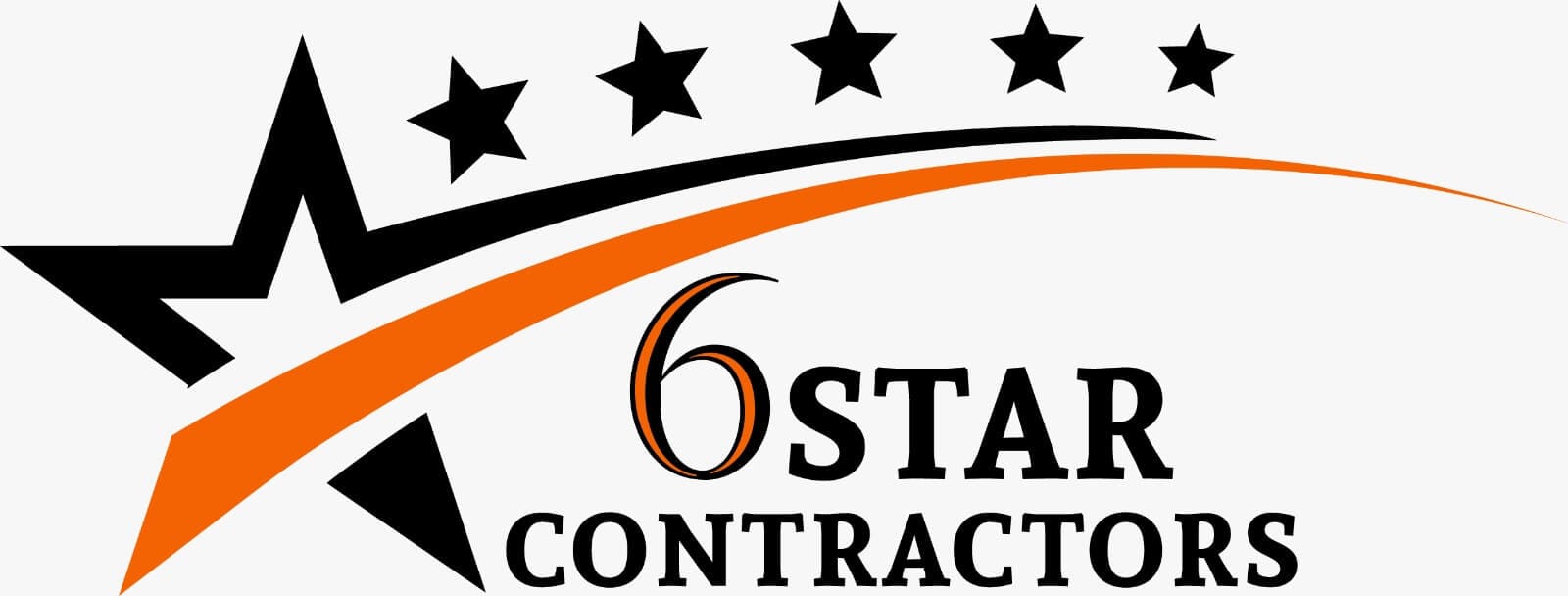

561-530-2845
info@estimatorflorida.com
Address
5245 Wiles Rd Apt 3-102 St. Pete Beach, FL 33073 United States
561-530-2845
info@estimatorflorida.com
Address
5245 Wiles Rd Apt 3-102 St. Pete Beach, FL 33073 United States
All copyright © Reserved | Designed By V Marketing Media | Disclaimer